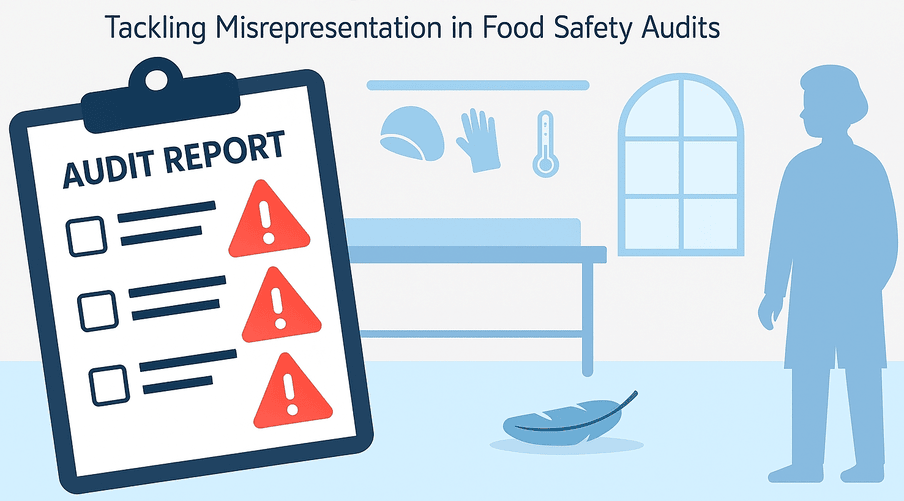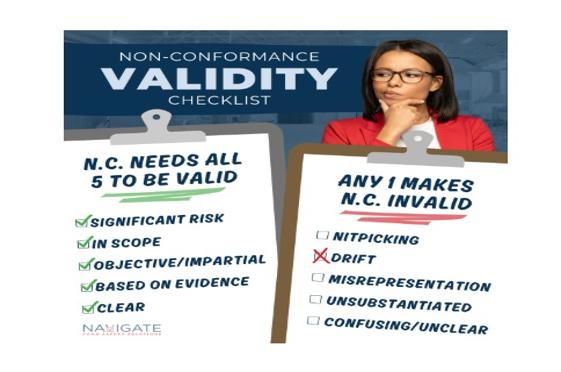When Audit Reports Don’t Match Reality: Tackling Misrepresentation in Food Safety Audits
14 Jul 2025

Learn how misrepresentation in food safety audit reports creates invalid non-conformances. Discover tips to align corrective actions with reality for a stronger food safety culture.
Have you ever read a food safety audit report and thought, “I was there but that’s not what I saw!”? This disconnect inspired the final installment in our series on attributes that make a non-conformance (NC) invalid in food safety audits. Today, we’re tackling misrepresentation and its impact on food safety culture.
What Is Misrepresentation in a Food Safety Audit?
Misrepresentation occurs when a food safety audit report lacks accurate detail or includes information that misleads readers about what was observed. This can lead to invalid NCs, forcing organizations to address issues that don’t reflect reality - a true story of misrepresentation.
This image represents my true story.
Consider these real examples I witnessed:
It wasn’t “feathers”; it was a single, inch-long feather.
It wasn’t on a make-up air unit; it was on an exhaust vent.
It was in a live fish holding area, not processing. Context matters.
The food safety audit report suggested a severe issue, like a dead bird in the air system, when the reality was a stray feather likely blown in through an open door. Was it worth noting during the food safety audit? Perhaps. But was it significant enough for a corrective action request? Unlikely. Misrepresentation inflated a minor observation, creating unnecessary work.
The Impact of Misrepresentation
When auditors embellish findings to add weight, it distorts the food safety audit report. Once issued, the report’s version of events overshadows reality, requiring a corrective action for an imaginary problem. This misstep wastes resources and creates red tape, diverting focus from genuine food safety issues.
Fixing misrepresented gaps rarely adds value to an organization. It erodes trust in the audit process and weakens food safety culture.
How to Avoid Misrepresentation with Food Safety Consulting Services
Preventing misrepresentation starts before the food safety audit report is finalized. Here’s how:
Review NCs On-Site: Before signing off, compare the written NCs with what you observed in the facility. If they don’t match, revisit the issue with the auditor to ensure alignment.
Ensure Clarity: A well-written NC makes it easier to appeal insignificant findings, supporting effective corrective actions.
By aligning written findings with reality, you ensure corrective action requests address real problems, strengthening food safety culture.
Learn More with Food Safety Training Online
To master identifying misrepresentation and other invalid NC attributes (nitpicking, drift, unsubstantiated, and unclear), explore our food safety training online course, “How to Write a Valid Non-Conformance.” This free, one-hour training, offered by our expert food safety consultant Alex Hanley, provides practical examples to enhance your audit skills. Register here: bit.ly/valid-nc. Completing it earns a certificate, supporting your food safety culture.
This food safety training online benefits auditors and auditees, fostering alignment and trust in food safety audits. We offer it free to unite both sides in advancing food safety.
Continue Exploring Food Safety Audit Reports
Misrepresentation is one of five attributes that can invalidate an NC. Dive deeper with our blog seriesUnderstanding Valid & Invalid Non-Conformances in Food Safety Audits
Identifying Nitpicking in a Non-Conformance: Why Not Every Finding is Significant
Understanding “Drift” in Non-Conformances: Keeping Audits In Scope
Ensuring Non-Conformances Are Substantiated: The Importance of Objective Evidence (coming soon)
The Need for Clarity in Non-Conformances: Avoiding Confusion (coming soon)

